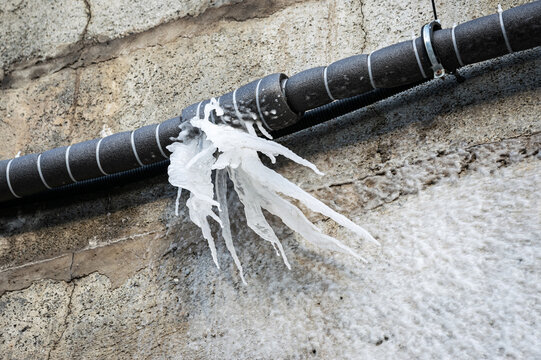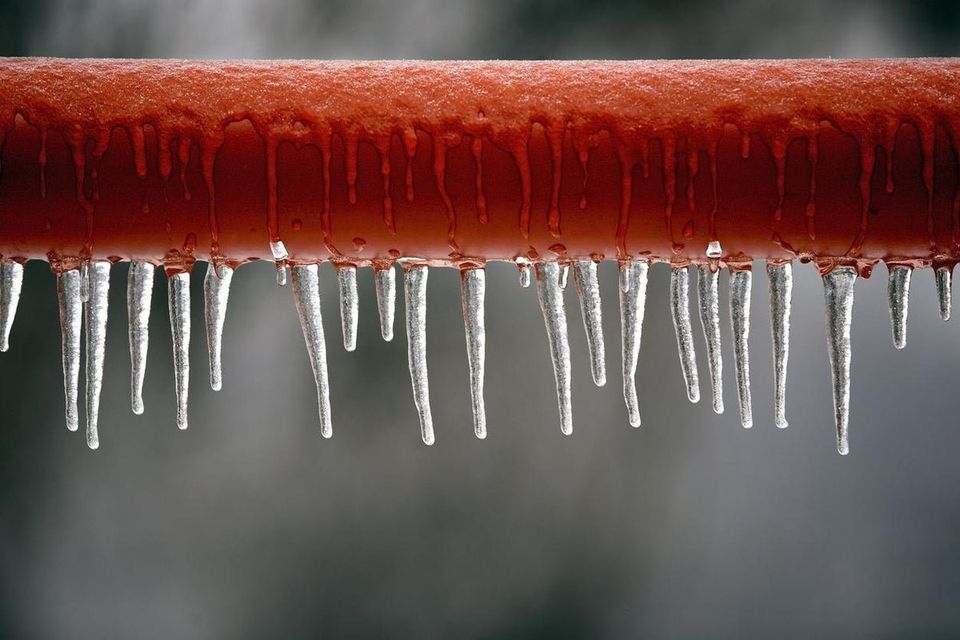They are making a number of good pointers on Helpful Tips to Prevent Frozen Pipes this Winter in general in this content down the page.

Cold weather can wreak havoc on your pipes, particularly by freezing pipelines. Below's how to avoid it from taking place and what to do if it does.
Intro
As temperatures drop, the danger of icy pipelines boosts, potentially causing costly repair services and water damage. Understanding exactly how to prevent icy pipes is important for property owners in cold climates.
Prevention Tips
Protecting at risk pipelines
Cover pipes in insulation sleeves or utilize warm tape to shield them from freezing temperature levels. Concentrate on pipelines in unheated or exterior areas of the home.
Heating techniques
Maintain interior areas adequately warmed, particularly areas with pipes. Open up closet doors to enable cozy air to circulate around pipelines under sinks.
How to determine frozen pipelines
Seek lowered water circulation from faucets, unusual smells or noises from pipes, and visible frost on subjected pipes.
Long-Term Solutions
Architectural adjustments
Consider rerouting pipes far from exterior walls or unheated locations. Add added insulation to attics, basements, and crawl spaces.
Upgrading insulation
Invest in top notch insulation for pipelines, attic rooms, and walls. Appropriate insulation helps keep regular temperature levels and decreases the risk of frozen pipes.
Shielding Outdoor Plumbing
Yard tubes and exterior taps
Detach and drain pipes yard hose pipes before wintertime. Install frost-proof faucets or cover outside faucets with protected caps.
Recognizing Frozen Pipelines
What creates pipes to freeze?
Pipelines ice up when subjected to temperatures listed below 32 ° F (0 ° C) for prolonged durations. As water inside the pipes freezes, it expands, taxing the pipe walls and possibly causing them to burst.
Risks and damages
Icy pipes can lead to water supply interruptions, residential or commercial property damage, and pricey repair services. Ruptured pipelines can flood homes and create comprehensive architectural damages.
Indications of Frozen Piping
Determining frozen pipes early can stop them from bursting.
What to Do If Your Pipes Freeze
Immediate actions to take
If you presume frozen pipelines, keep faucets open up to soothe stress as the ice melts. Use a hairdryer or towels soaked in warm water to thaw pipes slowly.
Final thought
Protecting against icy pipes requires positive actions and quick actions. By recognizing the reasons, signs, and safety nets, homeowners can shield their plumbing during winter.
6 Proven Ways to Prevent Frozen Pipes and Protect Your Home
Disconnect and Drain Garden Hoses
Before winter arrives, start by disconnecting your garden hoses and draining any remaining water. Close the shut-off valves that supply outdoor hose bibs and leave the outdoor faucet open to allow any residual water to drain. For extra protection, consider using faucet covers throughout the colder months. It’s also important to drain water from any sprinkler supply lines following the manufacturer’s directions.
Insulate Exposed Pipes
Insulating your pipes is an effective way to prevent freezing. Pipe insulation is readily available at home improvement stores and is relatively inexpensive. Pay close attention to pipes in unheated areas such as the attic, basement, crawl spaces, or garage. Apply foam insulation generously to create a buffer against the cold. You can also wrap your pipes in heat tape or thermostat-controlled heat cables for added warmth.
Seal Air Leaks
Inspect your home for any cracks or openings that could let in cold air. Seal any holes around the piping in interior or exterior walls, as well as the sill plates where your home rests on its foundation. Additionally, make sure to keep your garage door closed unless you’re entering or exiting. Leaving it open creates a significant air leak that can lead to frozen pipes.
Allow Warm Air Circulation
During cold snaps, it’s essential to allow warm air to circulate evenly throughout your home. Leave interior doors ajar to promote better airflow. Open kitchen and bathroom cabinets to help distribute heat consistently around the rooms. If you have small children or pets, be sure to remove any household chemicals or potentially harmful cleaners from open cabinets for safety.
Let Faucets Drip
A small trickle of water can make a big difference in preventing ice formation inside your pipes. When temperatures drop significantly, start a drip of water from all faucets served by exposed pipes. This continuous flow helps prevent the water from freezing. Additionally, running a few faucets slightly can relieve pressure inside the pipes, reducing the chances of a rupture if the water inside does freeze.
https://choateshvac.com/6-proven-ways-to-prevent-frozen-pipes-and-protect-your-home/

I ran across that piece of writing about Helpful Tips to Prevent Frozen Pipes this Winter when doing a search on the web. Do you know another individual who is enthusiastic about the niche? Please feel free to share it. Thanks a lot for taking the time to read it.
Click Here
Comments on “Protecting Against Frozen Plumbing in Winter: Essential Advice”